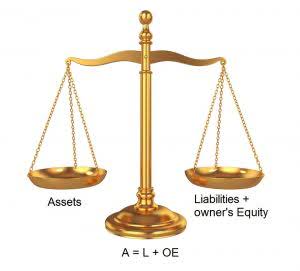
This formula helps determine the variation in a company’s working capital, which can reveal insights into its ability to fund operations and meet short-term obligations. A positive amount indicates that the company has adequate current assets to cover short-term obligations. If a company’s change in NWC increased year-over-year (YoY), a negative sign is placed in front to reflect that the company’s free cash flow (FCF) is reduced because more cash is tied up in operations. Current assets, such as cash and equivalents, inventory, accounts receivable, and marketable securities, are resources a company owns that can be used up or converted into cash within a year. A company can increase its working capital by selling more of its products. The working capital ratio is a method of analyzing the financial state of a company by measuring its current assets as a proportion of its current liabilities rather than as an integer.

Calculation Examples of Net Working Capital

In simple terms, working capital is the net difference between a company’s current assets and current liabilities and reflects its liquidity (or the cash on hand under a hypothetical liquidation). Net working capital (NWC) measures a company’s liquidity and ability to handle short-term financial obligations. It’s a vital financial metric that directly impacts day-to-day operations, cash flow, and profitability. By understanding and managing your NWC, you can ensure your business stays financially healthy and prepared for growth. Performance metrics, including data from balance sheets and financial statements, affect your net working capital calculations.
- It predicts future cash flow, unveils the true value of a company, and acts as a financial compass.
- Consequently, it helps keep the ship sailing smoothly in the unpredictable sea of business.
- Gross working capital refers to the total current assets, including cash, inventory, accounts receivable, and other short-term assets.
- Lenders generally like to see positive NWC because it suggests that a company can take on additional debt and keep up with payments.
- The company’s net working capital has increased by $50,000 over the period.
Balance Sheet Assumptions
In Year 1, the company’s working net working capital capital cycle is 60 days, which is the time needed to convert inventory into cash, collect cash from credit purchases, and fulfill its outstanding payables to suppliers or vendors. These elements reflect a company’s ability to manage short-term financial obligations and operational efficiency. The company’s net working capital has increased by $50,000 over the period.

Extend Accounts Payable
As you can see there is a heavy focus on financial modeling, finance, Excel, business valuation, budgeting/forecasting, PowerPoint presentations, accounting and business strategy. If future periods for the current accounts are not available, create a section to outline the drivers and assumptions for the main assets. Use the historical data to calculate drivers and assumptions for future periods. See the information below for common drivers used in calculating specific line items.
With Cash Flow Frog, you can effortlessly edit imported data without altering the original Accounting Security data in your accounting software, ensuring flexibility and data integrity. However, it can also indicate that resources aren’t being used efficiently, potentially tying up funds that could be better invested elsewhere. While both terms are often used interchangeably, they serve different purposes and provide unique insights. A high amount indicates that it has available buffer to accommodate additional short-term liabilities. Given the step function used in our model, the formula to calculate the incremental NWC is constant. The change in net revenue is the difference between the ending and beginning balance.
How to increase your net working capital: step one
- Taken together, this process represents the operating cycle (also called the cash conversion cycle).
- Current liabilities are the amount of money a company owes, such as accounts payable, short-term loans, and accrued expenses, that are due for payment within a year.
- Here, the cash conversion cycle is 33 days, which is pretty straightforward.
- Use the historical data to calculate drivers and assumptions for future periods.
- The rationale for subtracting the current period NWC from the prior period NWC, instead of the other way around, is to understand the impact on free cash flow (FCF) in the given period.
Imagine that in addition to buying too much inventory, the retailer is lenient with payment terms to its own customers (perhaps to stand out from the competition). This extends the time cash is tied up and adds a layer of uncertainty and risk around collection. The benefit of neglecting inventory and other non-current assets is that liquidating inventory may not be simple or desirable, so the quick ratio ignores those as a source of short-term liquidity. The working capital metric is relied upon by practitioners to serve as a critical indicator of liquidity risk and operational efficiency of a particular business.

Change in Net Working Capital Formula (NWC)
NWC trends should be analyzed over time, considering industry norms and business models. unearned revenue For instance, retail businesses often have negative NWC due to rapid inventory turnover and supplier credit terms. Since the company is holding off on issuing payments, the increase in payables and accrued expenses tends to be perceived positively.